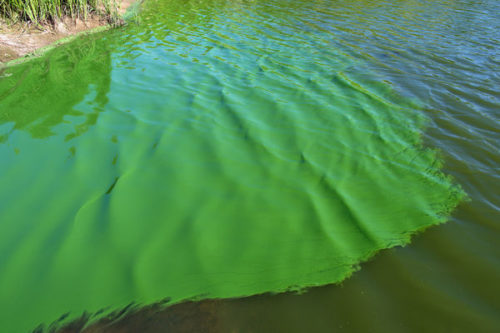Cross-posted from Biofuelwatch.

In response to the University of California San Diego and Sapphire Energy’s publication of results from open pond testing of genetically engineered microalgae, Biofuelwatch warns that such tests are far more risky than most people realize, and should be cause for concern, not celebration.
It is assumed, and these tests in fact confirmed, that GE microalgae will almost certainly escape into the wild from open air ponds. Once escaped, these single celled organisms can become air or water borne, and disperse widely, or even globally. There is no telling what impact they will have and no way to reverse their dispersal once it occurs.
Biofuelwatch considers it irresponsible to allow such tests to proceed, and recognizes this may be the first open pond test, but it is likely only the beginning given the very rapid pace of research and development of GMO algae for biofuels and a slew of other consumer “bioproducts”, which is proceeding with very little regulatory oversight.
Industry enthusiasts claim that GE microalgae will not likely survive in the wild, but there is no scientific basis for that assumption. In fact, many of the traits that are desirable for fuel and chemical production and industrial cultivation are precisely the traits that would lend a competitive advantage in nature. Those include traits like “improved” photosynthesis, resistance to predators and pests, hardiness and resilience that make them tolerant of industrial cultivation, or the ability to more effectively access and convert available nutrients etc.
Further, microalgae reproduce very rapidly, which means that engineered traits can quickly spread. Microalgae (cyanobacteria especially) are capable of “horizontal gene transfer” meaning that genes can be passed on not only to their direct progeny, but also to other unrelated individuals, and even to other species. Further, there is concern that engineered traits may not remain stable over time. All of these characteristics suggest introduced genes could spread rapidly out of control and change over time in unpredictable ways.
Biofuelwatch further points out that microalgae are notorious for producing “harmful algae blooms”(HABs) under the right conditions. With warming waters and nutrient runoff from agriculture, the “right conditions” are becoming ever more commonplace and we are seeing a dramatic uptick in algae blooms, including those that release toxins such as domoic acid, a potentially lethal neurotoxin.
Microalgae play a key role in regulating fundamental earth systems, as the source of more than half of the oxygen in our atmosphere, and as the base of aquatic food chains. In an article titled “Monster Potential Meets Potential Monster,” the authors point out that microalgae that have been engineered to produce chemicals and fuels will have altered stoichiometry – making them unpalatable to the zooplankton predators and grazers that normally keep populations in check in the wild and could “become a harmful algae bloom species par excellence”. They further state that “…given the ease with which GM microalgae could be transferred around the planet, the potential risk of GM algae to nature should not be underestimated…accordingly a strong argument could be made for the regulation of GM microalgae at the international level because the potential for damage could have global consequences, echoing recent concerns over geoengineering.”
Billions have been invested in developing algae biofuels to no avail, and with little basis for assuming they will ever be viable. Continuing the hype only perpetuates the illusion that we can continue “transportation as usual” in the face of a deepening climate crisis. Meanwhile, microalgae research and development is now focussing on niche markets for cosmetics, pharmaceuticals, nutraceuticals and many other consumer products. The UCSD tests are associated with the startup Sapphire Energy, which has received vast amounts of taxpayer dollars, and is apparently marketing algae derived surfboards. Another company, Solazyme – also a recipient of vast sums to produce biofuels – is producing little other than anti-wrinkle face cream.
The tests performed by UCSD scientists were of very limited scope and little assurance that GMO microalgae are “safe”. Meanwhile, we need to ask ourselves: are these products worth the money and worth the risks to our health and environment?